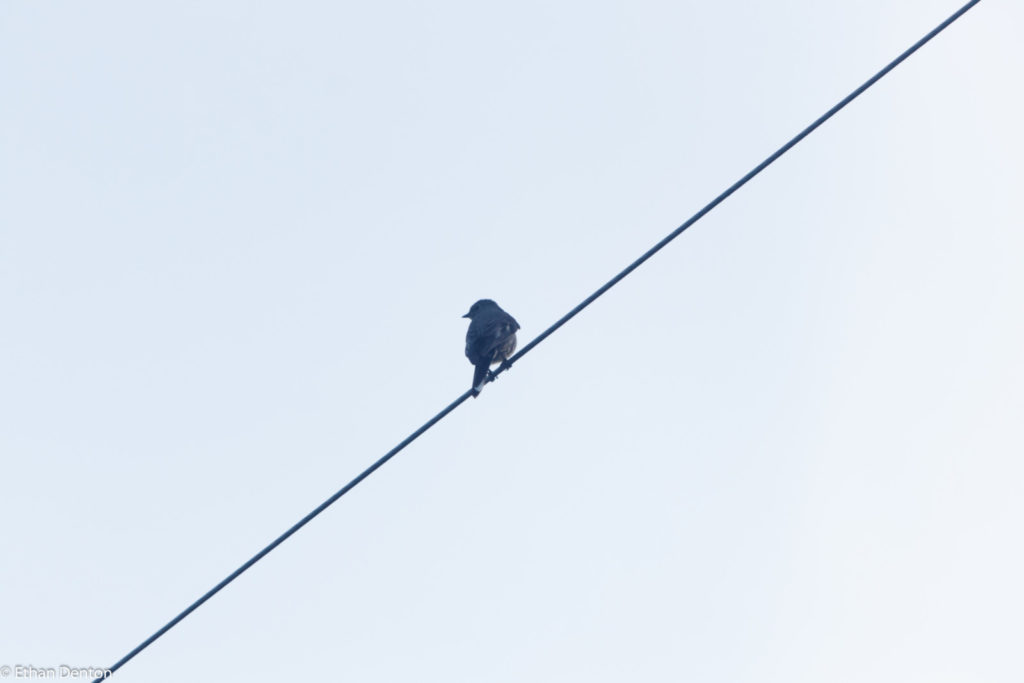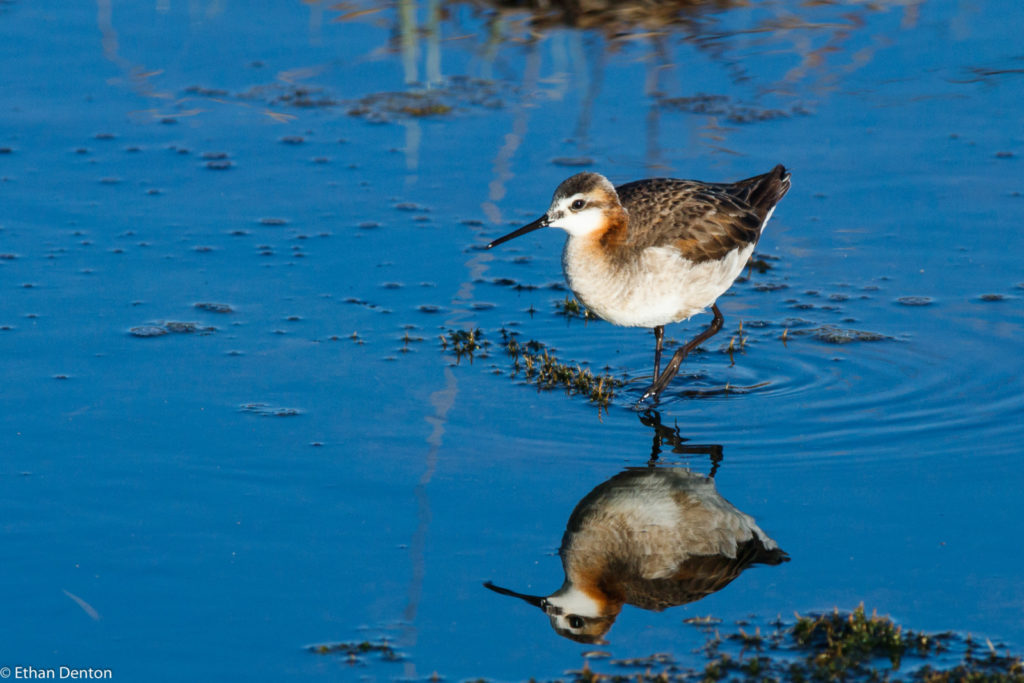Here’s a bird from May, can anyone identify it? My last WBW was the correctly guessed Varied Thrush.
Category: Birds
Hotspot Review – Flowing Waters Trail
I’m starting a new series, rating hotspots in Southern Alberta for anyone looking to find a new birding location. This will not be a regular series, but I’ll come out with at least a few every couple of months. First up, one of my nearby favourites; Flowing Waters!
Location:
Flowing Waters is located between Highway 1 and the TransCanada Highway in Bow Valley Provincial Park. It’s accessible through the nearby campsite, or by a game trail from Seebe Dam.
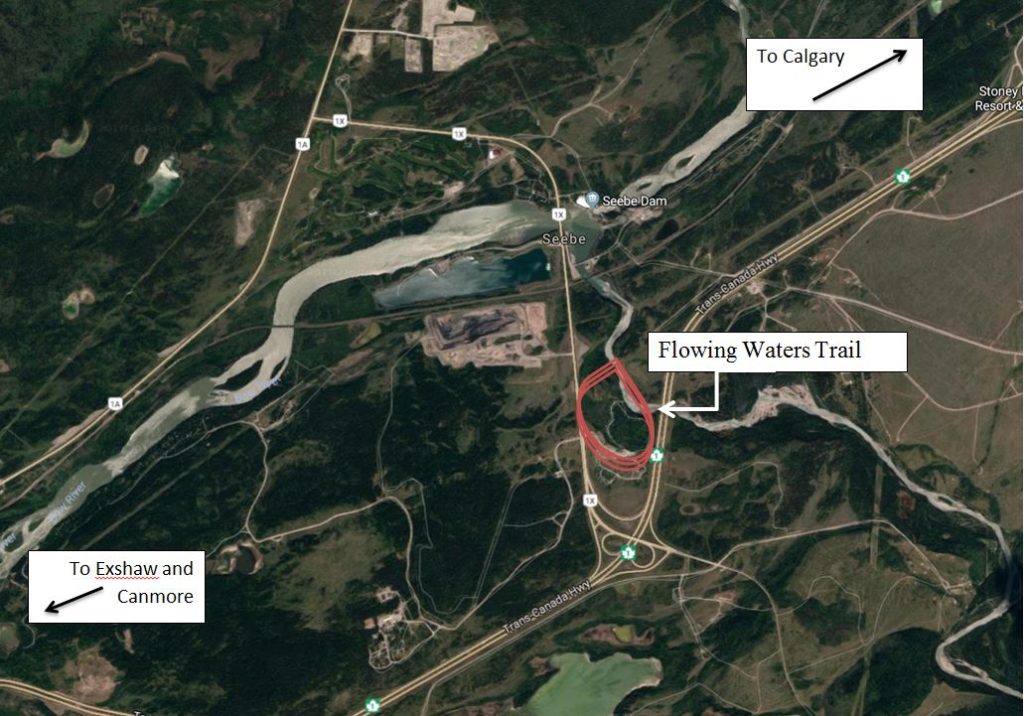
Difficulty:
Easy. The trail is a gentle loop, with mild inclines at one or two points. Occasionally, part of the path is flooded, but that is unusual. In winter, snow blows off the highway and onto the trail, sometimes blocking it in piles up to eight feet tall, but these are generally solid enough to walk across. A good walk is often around 2 hours.
Bird Life:
One of the top hotspots in the area, over 140 species have been found here, and a good morning can result in a checklist of between 40 and 50 taxa. Specialities include Western Tanagers, 5 species of swallows and many warblers, such as American Redstarts and Northern Waterthrush. Many unusual birds turn up here, and I have found Ovenbird, Blue-headed Vireo and Northern-Pygmy Owl at this location. Check out the eBird hotspot here.
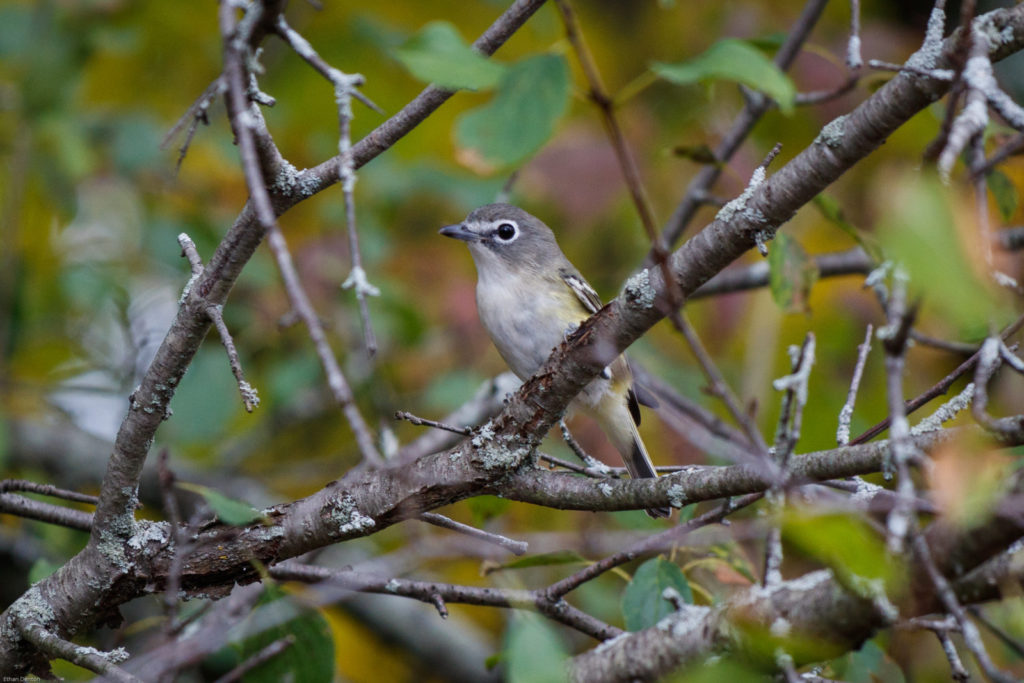
Conclusion:
A very good hotspot, but not quite as good as places like Carburn Park, Inglewood Bird Sanctuary and Confederation Park. If you are in the Bow Valley in the spring, summer or fall, it’s one of the best places to bird without having to travel much. More birders trying it out could turn up many more species, but I think it will remain a relatively mid-level location. Definitely worth giving some time on a spare morning, but not a place which should be chosen over some more prosperous areas when you are looking for lots of species in a short time.
Feather’s on Friday
The Strangest Birdathon Yet
The Great Canadian Birdathon is complete, and what a birdathon it was! With a final species count of over 115 birds, we beat last year’s total in a shorter time. Somewhat encumbered by my persistent illness, we set off in Water Valley at 5:30am and completed the count at Lac Des Arcs by 9:30pm.
One of our first birds of the day was the Least Flycatcher, a species which, along with the ubiquitous Clay-coloured Sparrow, turned up at almost every location we visited.
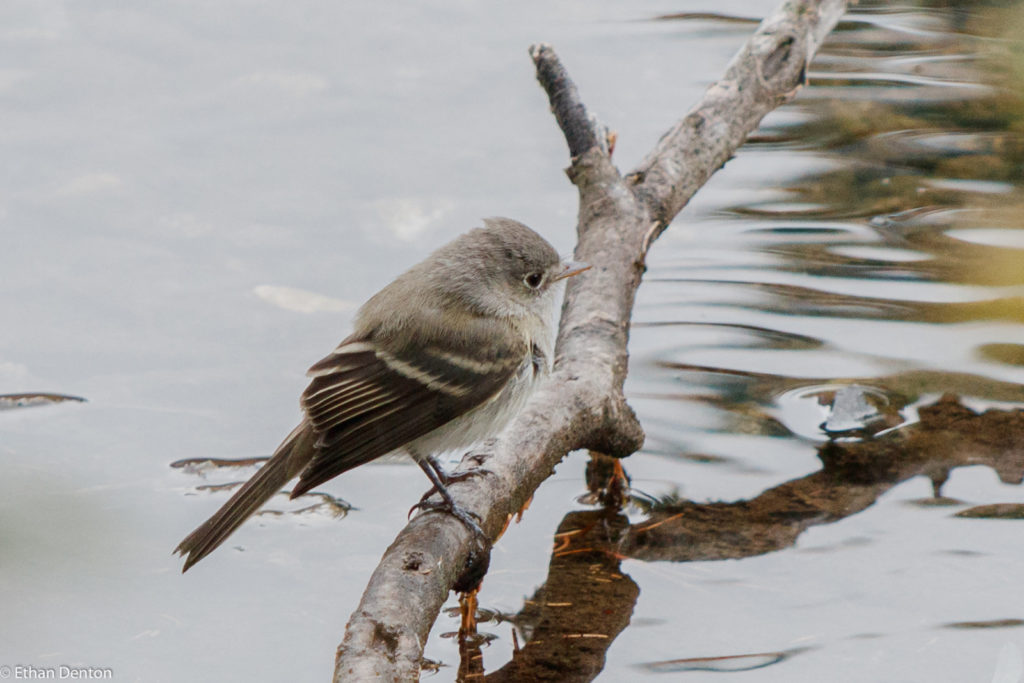
We headed out to a bridge whch we knew was quite good, and picked up over 30 species there, including a singing Blackburnian Warbler and my FOY Yellow-bellied Sapsuckers.
A few kilometers NW, at a marsh where we hoped to pick up Swamp Sparrow, Ovenbird and an early Yellow-bellied Flycatcher, we were greeted by a very obliging pair of Sandhill Cranes, which flew overhead, echoing their guttural calls for all to hear.
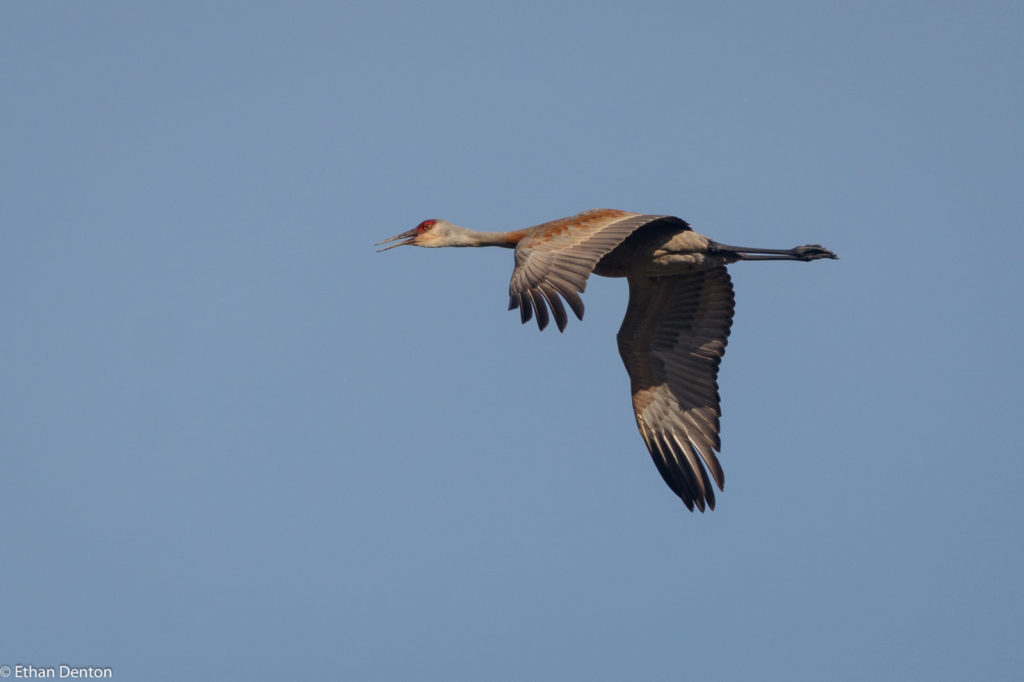
Unfortunately, we dipped on the Ovenbird and Yellow-bellied Flycatcher, but we did find Rose-breasted Grosbeaks, Baltrimore Oriole and a few Northern Waterthrushes to bring the day’s count up to 45.
Two days previous, Miles Tindal and I had located a breeding Cape May Warbler on the Horse Creek Road, so we pulled over there on the way to Horse Creek Road Marshes and not only found the male warbler, but heard a Cassin’s Vireo to boot!
At the marshes, we found very little, but did manage to identify a single Le Conte’s Sparrow amid the Savannahs.
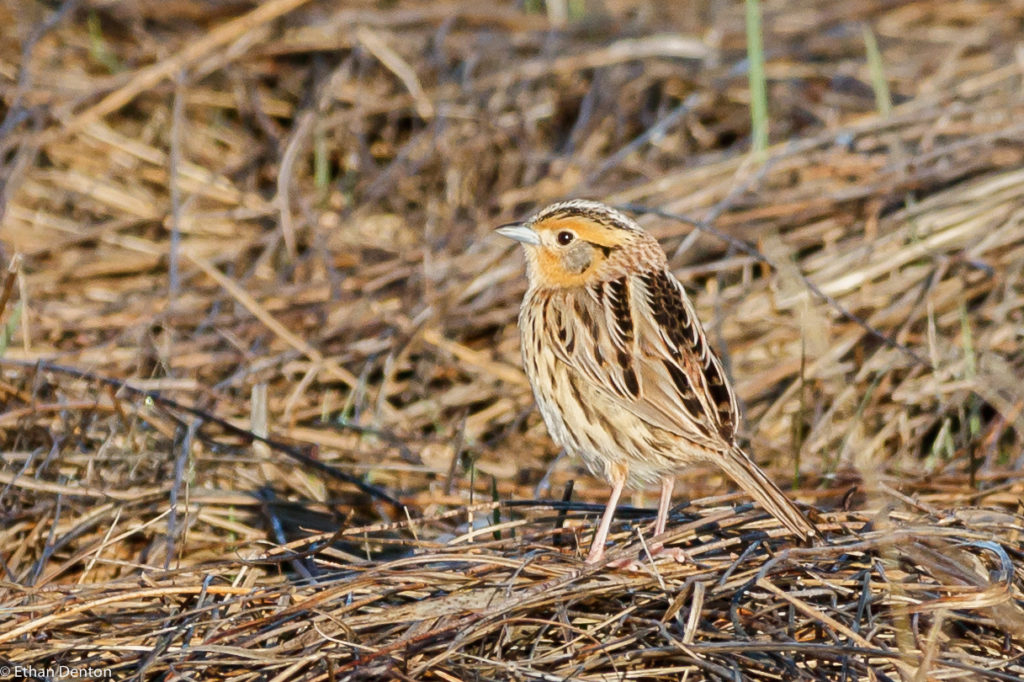
Since we were still lacking the Swamp Sparrow, we made a little detour to Winchell Lake where we successfully relocated one of these pretty little birds. Now came the strange part of the day. Having little hope of a great birdathon in terms of numbers (we were planning to end early, remember), we headed out on a wild goose chase to find a Green Heron which had been seen at an undisclosed location, and we were guessing where it could have been, thanks to the wealth of knowledge belonging to Dan Arndt of Calgary, who knew an area which resembled the photos of the bird.
Needless to say, we missed the heron, but the journey out to the spot was quite fruitful, turning up Baird’s, Pectoral and Semi-palmated Sandpipers, and other shorebirds including many Wilson’s Phalaropes.
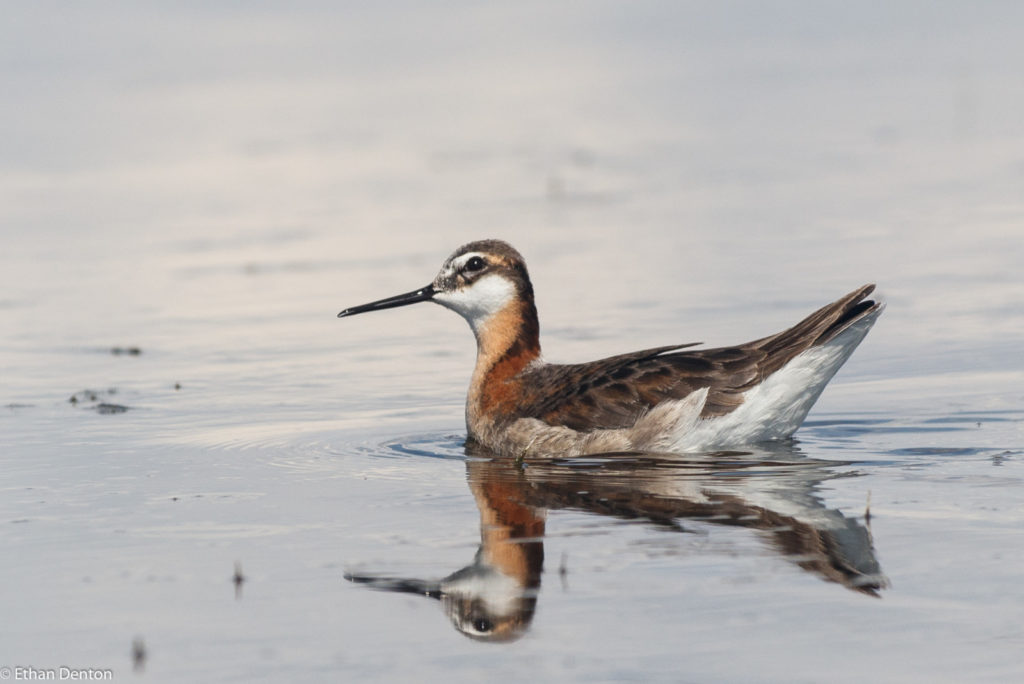
Proceeding now towards Frank Lake, we chanced upon a Least Sandpiper, some Black Terns and best of all, a Long-billed Curlew!
Frank Lake was excellent as usual, though not at its brilliant best (there was a Little Blue Heron seen there today!). Barn Swallows offered good photography options, while White-faced Ibises and Forster’s Terns patrolled the skies. Eared Grebe and Ruddy Ducks ruled the water, and mixed in we found Red-necked Phalaropes, Western Grebes and a Marsh Wren in – surprisingly enough – the marsh.
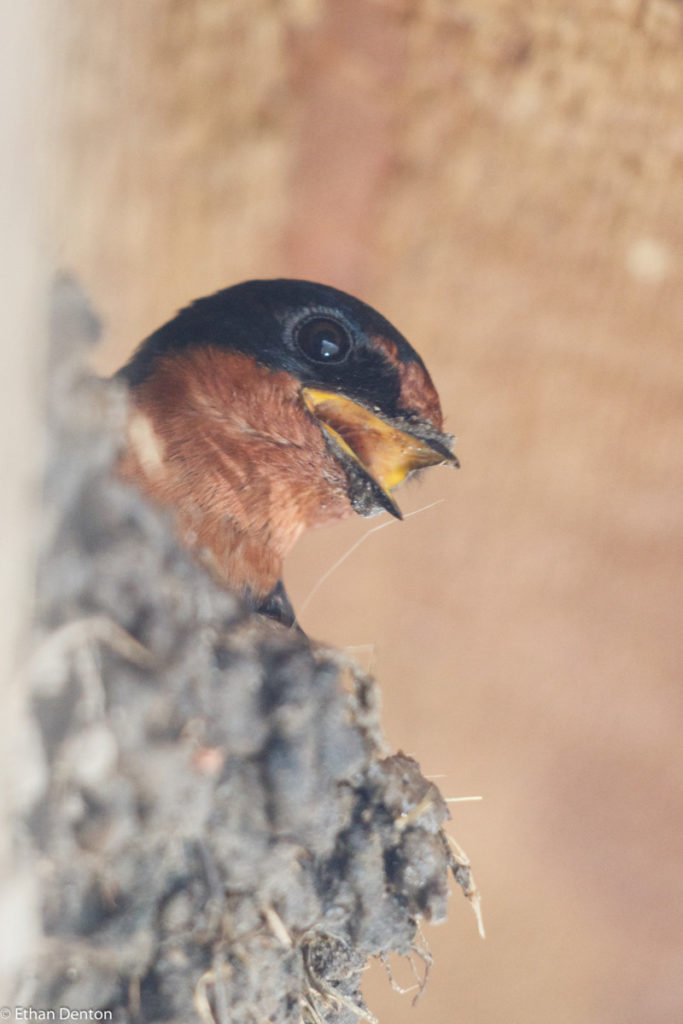
A stop in High River yielded European Collared-Dove and Pine Siskin, and we were almost at Bragg Creek when the text came in. A bird has been seen at Langdon, a bird which almost never makes it as far North as Calgary. A Snowy Egret.
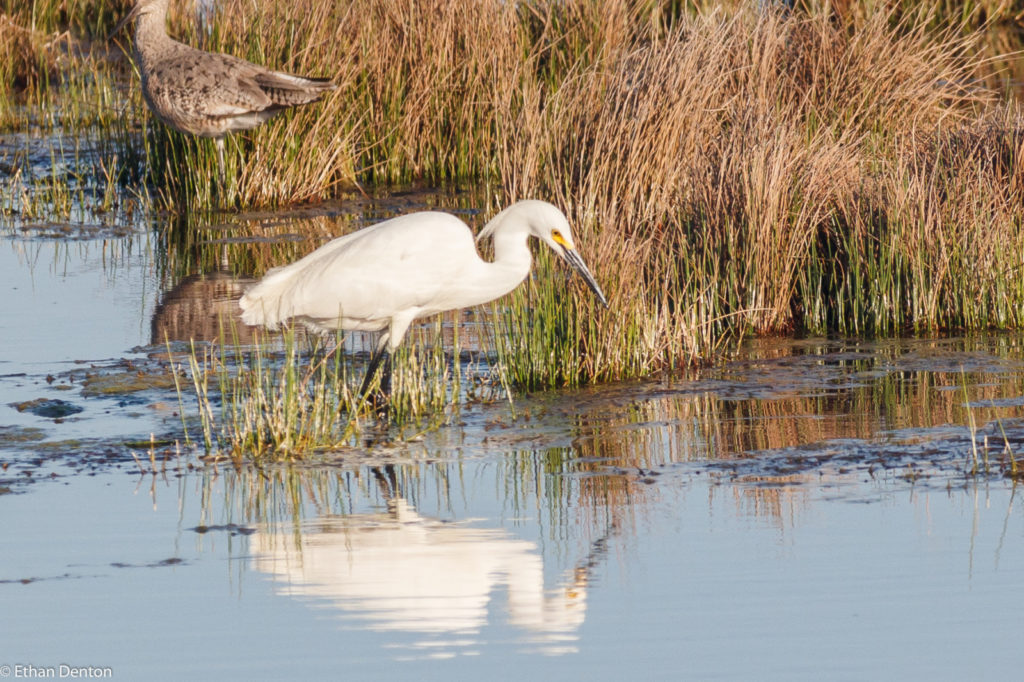
After originally hesitating due to the distance it was, we had no r-egrets about making the move to find it.
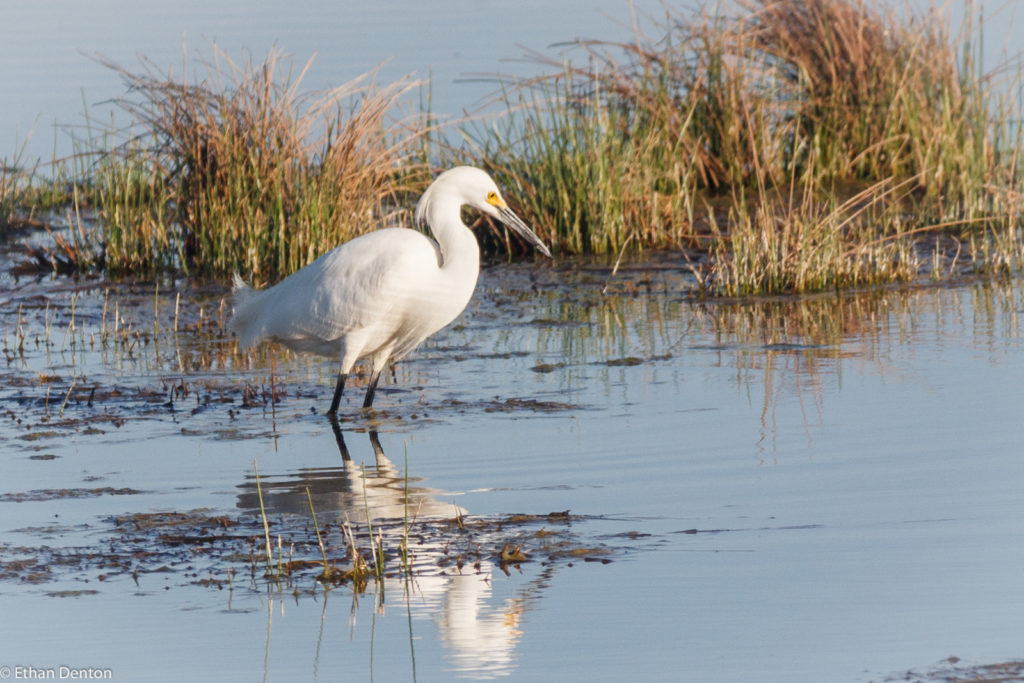
As we observed this special bird, an anxious Willet circled above, screaming out a distinctive”Will-et! Will-et!”
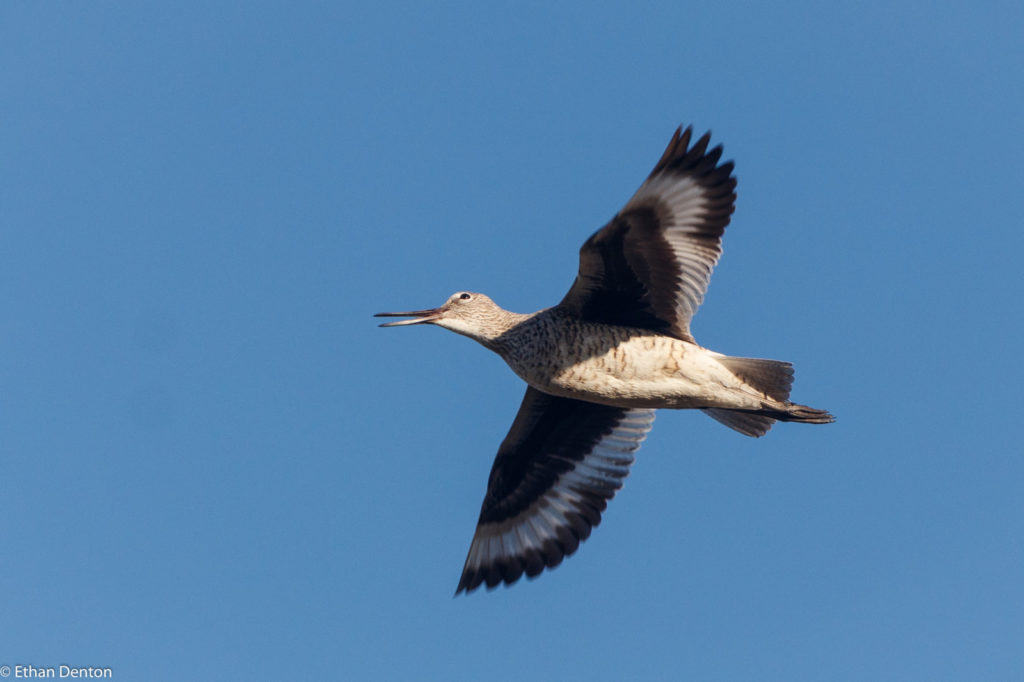
We concluded the day with a desperate stop at Lac Des Arcs to find, oddly enough, our first Common Goldeneye of the day. That rounded off our 2018 Great Canadian Birdathon – with no owls, eagles or falcons, and only three of a possible 7 thrushes, a strange one indeed. For any who want to see the full list of 117 species, click here.
Please consider donating to this important cause! The birdathon is not only a great birding experience for participants, but it is also a crucial part of the fundraising efforts to protect our avian life, both in their breeding grounds in North America, and in their wintering territories farther south. To support our valiant volunteers in their vital work, make a donation to my fundraising page here.
Canmore Spring Bird Walks – May 27th Trip Report
The third edition of Canmore Spring Bird Walks began quietly, oddly lacking the usual morning chorus. This would be the theme of the first half of the walk, in which we saw and heard little apart from American Robins, Lincoln’s Sparrows and Red-winged Blackbirds. Once we got to the backside of the creek, however, that changed.
A slow paced musical trill reverberated across the marsh, as participants got serenaded by a relative rarity, the charismatic Swamp Sparrow. The Harlequin Ducks have departed for faster mountain streams in which to breed, but a female Northern Pintail made a fly-by appearance.
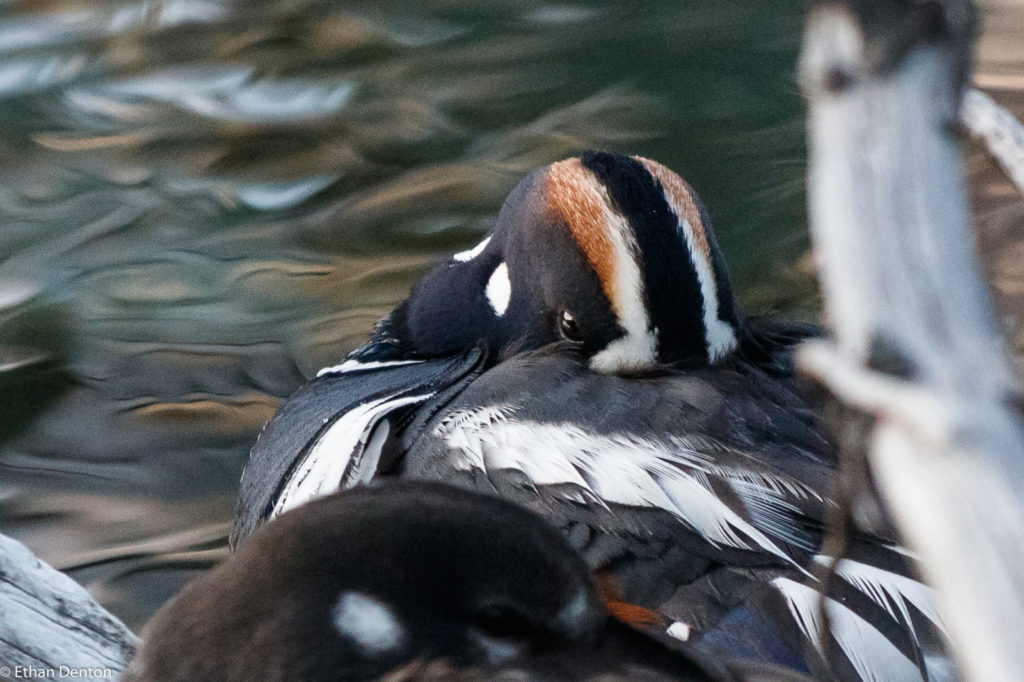
Strolling back via the boardwalk, we were treated to excellent views of Yellow Warbler, Lincoln’s Sparrows and this male Common Yellowthroat.
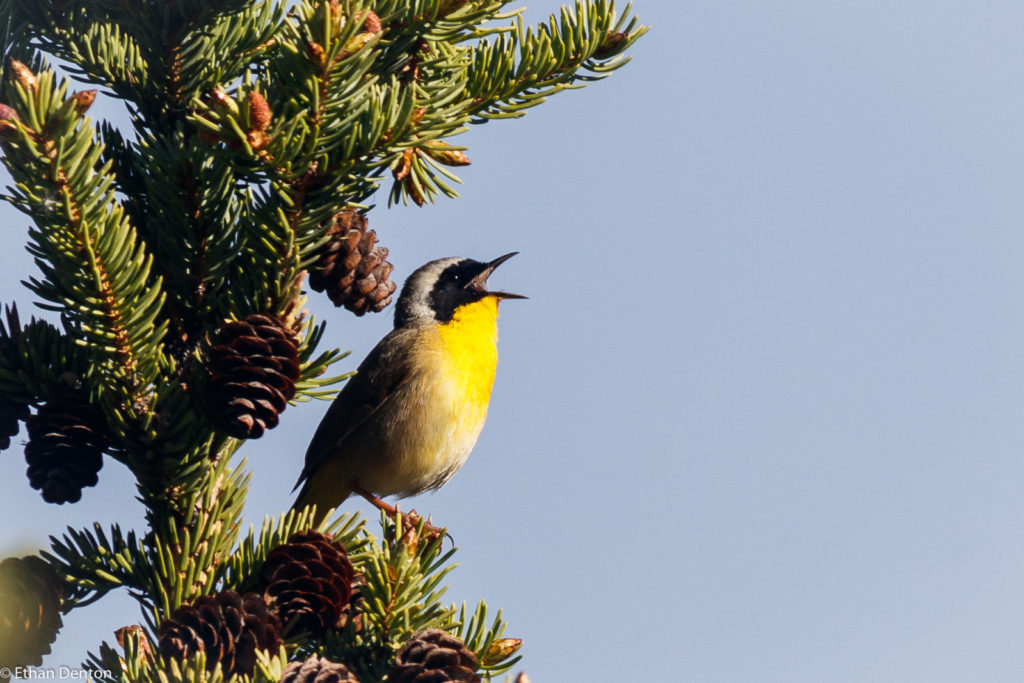
Towards the conclusion of the walk, we relocated the Swamp Sparrow, along with Song Sparrow and juvenile Mallards. The really special birds didn’t come until the final fleeting moments of the walk, though. As the group began to dissipate, a Calliope Hummingbird hovered mere feet from the Big Head statue, and a female Yellow-headed Blackbird perched on the Main Street bridge.
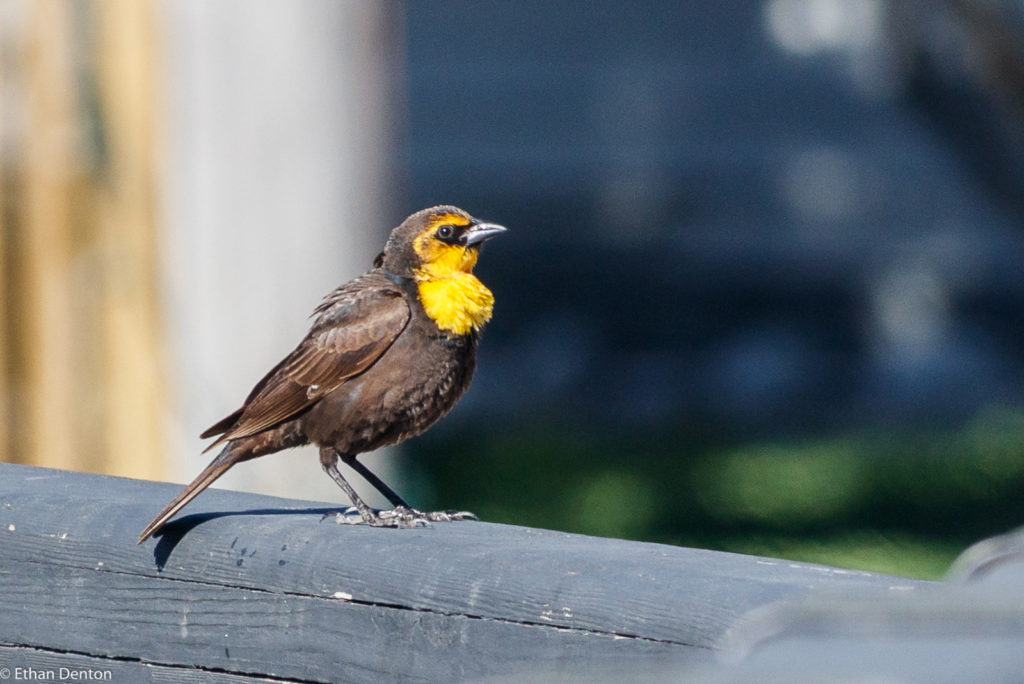
This is the first time a Yellow-headed Blackbird has been reported to eBird here, but I know that I saw one many years back, on Policeman’s Creek. If anyone wants to see the full list for the day, click here for my checklist. I hope to see everybody out next time, on June 10th. By then, most of our birds should have arrived, and we’ll be looking for birds like last year’s vagrant Bullock’s Oriole. On Policeman’s Creek, there’s always a good chance for unusual individuals!
Recent Arrivals – Warblers!
One of the most popular spring migrants families is the Warblers, with their bright plumage and stunning songs capturing the attention of even non-birders. In the last week, many species of Warbler have returned to Alberta, including even a few Black-throated Green Warblers spread across the province.
One of my personal favourite warblers is the Cape May. Bright yellow, with black streaking and an orange face patch, this small bird tends to stay high up in spruce or deciduous trees. Yesterday, however, we got lucky with one and it came down low for some photographs.
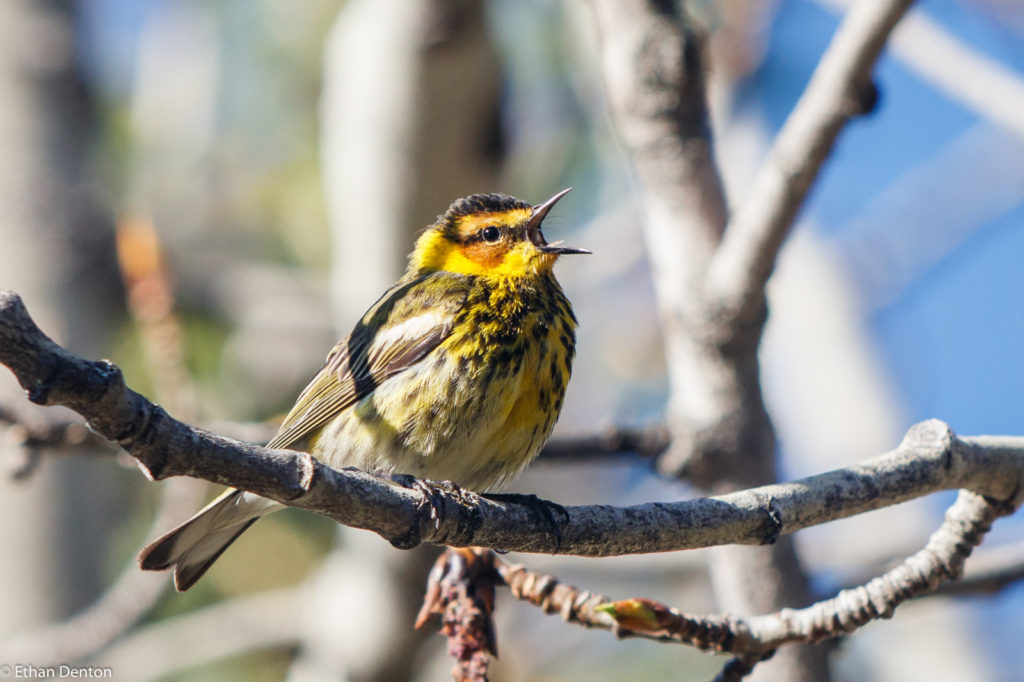
Another warbler which just came in is one which breeds in Banff, but has not been seen in Canmore until I found this individual on Policeman’s Creek: Blackpoll Warbler!
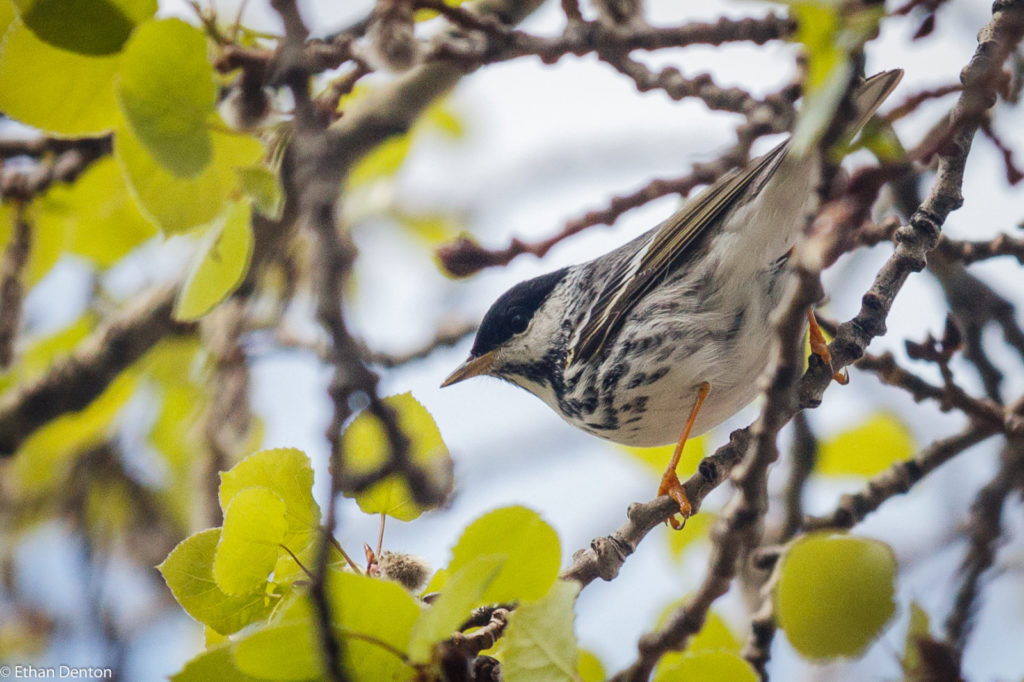
Finally, the American Redstart. Three this morning in Flowing Waters was a good count for this time, but these charismatic little fellows will be commonplace in Canmore before long.
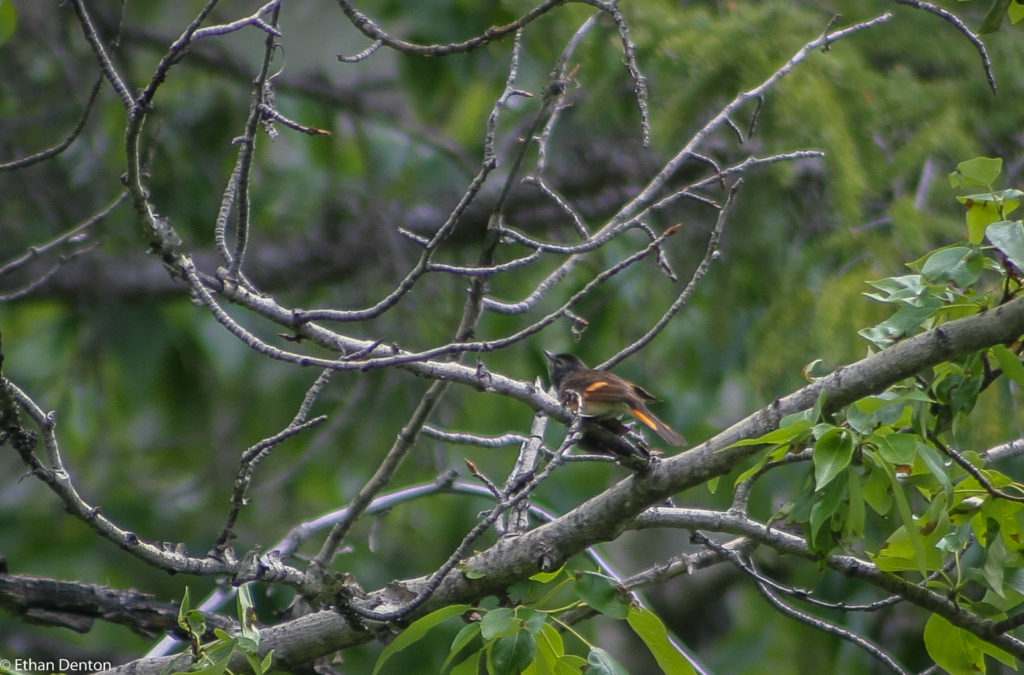
Here’s to the Tennessee, MacGillivary’s and more still to come!
Feathers on Friday
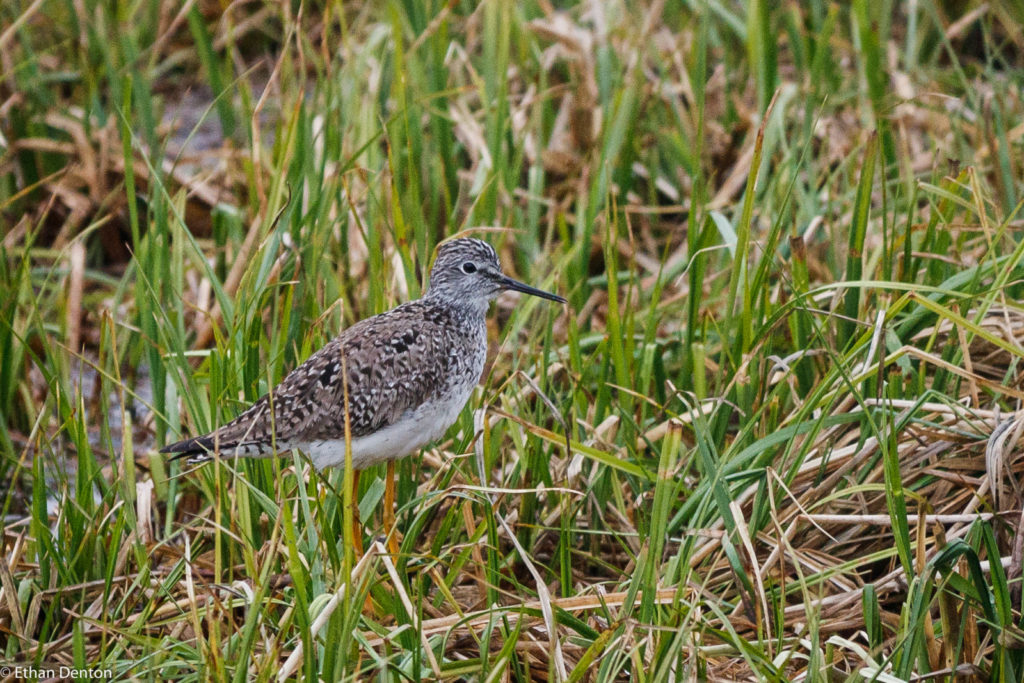
A new wave of migrants hit the Bow Valley recently, some of the highlights being FOY Dusky Flycatcher, American Avocet, Northern Waterthrush and returning Barn Swallows. One of the less flashy new arrivals was this Greater Yellowlegs, which turned up at the Martin Stables yesterday.
